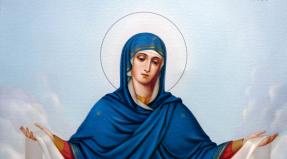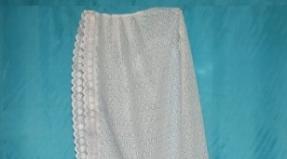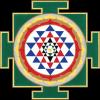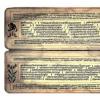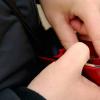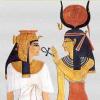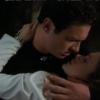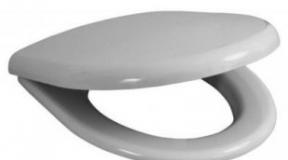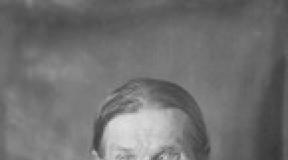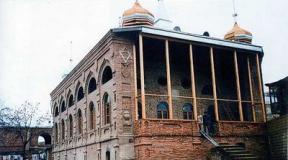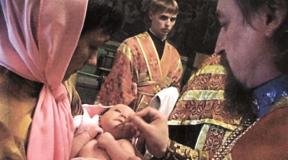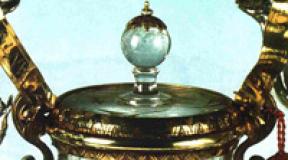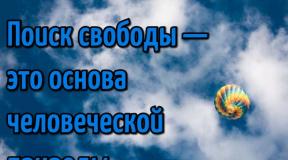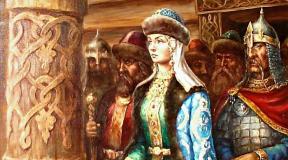Tarot General questions of tarology: systems, approaches, methods of interpretation of the Tarot. Minor Arcana Tarot
General questions of tarology: systems, approaches, methods of tarot interpretation
This short article touches on several theoretical issues, but at the same time they are directly related to the practice of divination using Tarot cards.
The more you communicate with fellow tarot readers, the more you become convinced that we all work with Tarot in different ways: each has its own principles, methods and approaches to work. These differences are manifested in many ways. In this article, I will touch on just a few of these parameters.
IO Three main approaches in predictive work with the Tarot.
What does a tarot reader work with?
There are three main approaches to working with Tarot. These approaches are determined by the basic basis on which the tarot reader relies in the first place.
1. The first approach is the approach from the system.
As you know, on this moment there are several generally recognized, most common Tarot schools. Many tarologists in one way or another rely on one of them.
Representatives of the French system adhere to the canons of the first occult Tarot, which was developed by E. Levy, P. Christian, O. Wirth, Papus and their followers. Everything else for them is a distortion of the primary system.
Waites (perhaps the largest "clan" of tarologists) are convinced that their deck (+ its clones) and their system are the most working and the easiest to learn and understand: after all, they have plot Minor arcana! And their Power is in the "correct", eighth, place, because it is associated with Leo, and the order of the signs of the Zodiac should be straight (... Gemini - Lovers, Cancer - Chariot, Leo - Power, Virgo - Hermit, and now Libra , and they are - Justice!). And the Fool is zero, because it is impossible without zero: everything starts with absence, with creative emptiness, and only then does one appear ...
For the Crowleyans, the most faithful, accurate system is A. Crowley's system and the Tarot Thoth deck. Everything else for them is old, since it does not reflect the changes that have occurred as a result of the transition to a new Eon, the Eon of Horus. And Tsadi is not a Star! .. And the Emperor ... And this, of course, is easily explained, because there is a double loop in the Zodiac ... And Justice is not Justice, but Correction, because “justice ... is not inherent in nature; however, Nature is inherent in accuracy "... And so on, and so on ...
What is the essence of the system approach?
As a tarot reader, I choose a certain arcanological system of the Tarot and, in accordance with this system, I select for myself a deck that most reflects the essence of this system and corresponds to my aesthetic tastes. In other words, I choose a certain system of concepts, concepts and ideas coded in a certain way in a deck of cards.
For example, if I choose the French system, then I will look for a deck that meets the requirements of this system, namely:
A) the lasso Justice has number 8, and Strength - 11;
B) the Jester's lasso has number 21 (or, additionally, 0), the Mir lasso - 22 (or, additionally, 21);
C) the drawings on the Major Arcana fully correspond to the descriptions that were given in the works of representatives of the French Tarot system (Christian, Wirth, Papus) or in the works of their followers (G.O.M., Shmakov);
D) if attributions are given on the cards, then they must be "French": Magician - aleph, air; Papess (Priestess) - Bet, Luna; Lovers - wow, Taurus; Jester - shin, fire; The world is tau, the sun ...
E) it is desirable that the Minor Arcana be unpainted, without plots, and if drawn, then with such plots that reflect the meanings of these arcana in the French system. This requirement is met, for example, by the Medieval Tarot of Scapini. Papus has 7 wands that have the following meanings: negotiation, conversation, meeting, conversation ... to speak, to say, to talk, to chat, etc. On the card "7 of Wands" Tarot Scapini, these meanings are conveyed through the image of an orator who uses 7 wands as a tribune.
If I choose the Waite system, then I take the canonical deck of this system, the Ryder-Waite-Smith deck, or some clone of it, in which the requirements of the Waite system are met. Etc. Etc.
2. The second approach is from the deck.
What is it?
I have a tarot deck. It doesn't matter to me at all whether this deck is made within the framework of any system. Yes, I may not even know that there are any systems at all! I just like this deck, and I understand its "language". I deduce the meanings of the cards from the images and symbols that are depicted on them. Studying each card, one by one, delving into symbolism, I make for myself lists of those meanings that the cards can have. In essence, the so-called development of the deck (in forums or in groups) is the study of the symbolism of a particular deck, and not an arcanological system. The support base for work in this case is precisely the symbolism of a particular deck.
3. Third approach.
It is also possible to combine the first two approaches, when I know the system, but at the same time, in addition to those values \u200b\u200bthat are considered traditional, I also use those that I independently derived from the symbolism of the cards. This approach (which combines both the universal system and the individual symbolism of the deck) is perhaps the most used.
II. Interpretation Techniques: Intuitivists and Rationalists
This is another division. It is based on the starting position followed by the tarot reader.
1. Some believe that the process of prediction itself is an extremely intuitive process. And if this is so, then you do not need to learn the meanings of the cards, and even more so to know everything by heart. The message that the cards carry in the process of fortune-telling will be read purely intuitively, based on the images that are imprinted on the cards. If this method is chosen, then, as a rule, a deck with traced Minor lasso is chosen, which is quite understandable. A card that shows, for example, only 2 swords on a blank background gives little association. It's another matter if some plot is depicted on it. For example, a blindfolded female figure holding two crossed swords and sitting against the backdrop of the water surface. In this case, the image performs a meaning-generating function: all meanings follow from the image, and not from any of my knowledge or ideas about the meaning of this card.
2. Another method (one might say exactly the opposite) is based on a different point of view, namely: in order to work productively with a deck, you need to know the meaning of each card by heart, and you need a deep knowledge of each card. In other words, you need to keep the whole system in your head! This method can be called rational. With this approach, it does not matter whether the Minor arcana is drawn or not.
From my own experience, I can say that you need to know the values \u200b\u200bof the cards. Otherwise, there is a risk of "drowning" in the boundless ocean of symbolism. In one way or another, there should be some coordinate system in the head, which will allow you to orient yourself when reading maps.
However, the other side should also be mentioned here. If you adhere to a certain rigid system of interpretation of the cards (that is, to consider that “this card” means only “this” and nothing else), then the effect can also be negative. Excessive dogmatism can lead to the fact that the meaning of the card, which lies in a specific layout on the surface, is simply not perceived by the tarologist, since it does not fit into its rigid framework and is initially ignored.
Therefore, when interpreting cards in a layout, it is necessary to harmoniously combine all two principles: both rational and intuitive.
Reading any alignment is at the same time an intuitive, irrational process that requires absolute freedom and the purity of our consciousness (in order to be able to perceive information from "special" spheres), and a rational process based on logic and, therefore, requiring a certain basis.
In order for the interpretation of the alignment to be deep and consistent with reality, truthful, you need to adhere to the middle path: not to drive yourself into a narrow framework, but at the same time to know the limit of freedom.
The first person who connected Tarot cards with ancient Egyptian culture was the Frenchman Antoine Cours Gebelin (1728-1784), Protestant pastor, Freemason, scholar. He summarized his research and philosophical reasoning in his major work "The Primitive World, Its Analysis and Comparison with the Modern World".
This is what this eminent researcher said about the Tarot Cards: "Tarot. An ancient book of wisdom, which was deliberately disguised by the ancient Egyptian priests as a deck of playing cards. The Tarot deck is widespread in Germany, Italy and Switzerland, the Egyptian system, as we will show later; its name consists of two eastern words - Tar and Rha (Rho) , and means "the royal way." As a matter of fact, she survived the centuries precisely because it remained unrecognized as a book of wisdom ".
The second most important figure in the Egyptian and generally esoteric Tarot tradition is undoubtedly Jean-Baptiste Aliet (1738-1791), better known under the kabbalistic pseudonym Eteila.
It was Eteila who contributed to the birth of a mass interest in the Tarot and the spread of ideas about the Egyptian Tarot, first written by Gebelin.
In 1782, Eteila wrote and presented to the censor the book "Egyptian Cartomancy or the Interpretation of 78 Hieroglyphs on Cards Called Tarot".
Eteila adds some details: The Book of Thoth was created by a collegium of seventeen magicians headed by Hermes Trismegistus; it happened in the 171st year after the Great Flood, or 3953 years before the book was written in 1783.
The original paintings were inscribed on gold plates and were located in the Temple of Fire in Memphis "- this is an idea that Paul Christian would later develop. The great fortuneteller and soothsayer was convinced that the decks that existed in contemporary Europe were distortions of the original symbols, and (for the first time in history!) - took upon himself the trouble of "restoring" the Egyptian Tarot and created a special research society for this. Everyone can see the fruit of his efforts in the "Big Etteilla, or Egyptian Tarot" deck, which was published at the end of the 20th century by the French company "Grimaud" ...
To summarize, Eteila (Jean-Baptiste Alette) was the first to restore a complete deck of the original Egyptian Tarot as the "Book of Thoth". The Etteila tradition was very quickly transformed into one of the methods of cartomancy, or simply - fortune-telling on cards.
Why did tarot card reading become so popular these days? And its popularity is gaining more and more momentum. First, these amazing sacred cards have become available to anyone. However, learning to predict the future professionally by looking into people's destinies is not as easy as it might seem at first glance. Secondly, Tarot cards reveal upcoming events with a very high degree of probability. For this, high-ranking specialists fell in love with them.
For example, our leading tarot readers, who have already become widely popular among clients, constitute the elite of modern esoteric predictors. All of them unanimously appreciate the development of the ancient Egyptians. The words of the specialists are confirmed by numerous positive reviews from grateful clients. Third, these amazing maps are not just a predictive system. They are able to change a person for the better, help him in self-realization. The one who works with these sacred symbols, becomes purer in soul, acquires spirituality. And what is important, the energy of divine presence and love is transmitted to clients. Tarot cards are alive. You can study them indefinitely, explore subtle connections. There are historical truths and there are esoteric truths. We can study and generalize the historical truths about the Mysteries of the Pyramids and the Arcana of the Tarot, based on surviving evidence, texts and images, and esoteric truths await those who are ready to continue their journey further.
What does the Tarot system show?
Tarot not only allows you to see possible troubles or conflict situations, but also gives a person advice on how to "get out of the water". How to behave with a partner, what decision to make in a confusing situation: at work, at home, in your personal life. The system allows us to interpret our unconscious dreams, to understand the common destiny of one person with an immense galaxy, because the Tarot path touches and opens up the possibility of global knowledge affecting both one person and his family, society, country and the whole world in which we live
Tarot cards are called the book of wisdom egyptian god Thoth, only expressed not in text with stitched pages, but in separate symbols and images, numbers and signs that combine the sacred meaning of human destinies.
Tarot cards are known since the time of the pharaohs, the Tarot deck was a collection of gold chased sheets, frescoes on the walls of a secret temple, on which occult truths - the Arcana - were depicted in symbolic form.
The word "Tarot" itself meant - the road of the Lords, the Royal Path ... Knowledge for the Chosen, encrypted with images, symbols and numbers, which should be understood and learned to read.
Learning the Tarot means embarking on the path of Initiation, understood as the consistent mastery of each of the Tarot Arcana, and in other words - the Path to knowledge.
People often ask themselves: "Is there any sense in predictions? What's the use if I know my future, because you can't cheat fate? "
Indeed, it is impossible to deceive fate, just as it is impossible to jump over a telegraph pole, but you can get around the situation itself.
Are you surprised by this paradox ?! Now I will explain what I mean.If fate, for example, has prepared a conflict for us, then we cannot avoid it. But it is within our power to aggravate this situation or weaken it.Since it can be an easy quarrel with a saleswoman or a squabble on the bus, or maybe a serious conflict with the authorities, which does not bode well.
Let me tell you a little secret. If the tarot reader has predicted, for example, the impending loss of some thing, then do not wait for fate to decide at its own discretion. Get ahead of the action. Take and break some not very valuable personal item and throw it away. It can be an old hairbrush, a fountain pen, or a handkerchief. The main thing is that the item belongs to you personally.
And what to do if there is a break with a loved one?
Is it possible that in such a delicate situation a tarot reader can give advice that can preserve love and mutual understanding?
Yes, and this situation is quite solvable. You can quarrel or break off relations with a stranger, but this is not the best option. I recommend scolding your dog, kitty, or fish in the aquarium. Or "quarrel" with a home flower. I assure you, just as the projectile does not hit the same place, the elements of the events, having fired empty, will no longer do you any harm.
This is another of my favorite works. When in the late 90s I got carried away (as it turned out, for my whole life) tarot cards, there was very little literature. I wanted to collect everything that could be learned about the Tarot Waite in one synopsis. The result is such a book, which has been reprinted many times since 1999 under different names and in different formats. I constantly corrected translation inaccuracies, added (at my own desire to show off my learning) and removed (at the request of the publishers to save paper and reduce the cost of the book) various historical and theoretical materials. There were several versions of my foreword. Below I present a lightweight (without a lot of footnotes) online version.
***
Answer the question "What is Tarot?" not as easy as it seems. A whole book could be devoted to this topic alone. The easiest way to say that Tarot is special kind cards used for games, fortune telling and meditation. (By the way, contrary to popular belief, "ordinary" playing cards do not come from the Tarot. Historical evidence suggests that this is exactly the opposite - in Italy of the 15th century to playing cardswho came to Europe from the Arab world, someone decided to add a number of "trump cards" - additional cards, each with a special picture.) But in almost every work on the Tarot, you will read that these are not so much cards as a hieroglyphic book, containing the key to ancient esoteric knowledge. I would suggest a generic definition like this:
Tarot is, on the one hand, a whole complex of human practices, and on the other hand, a special class of things necessary for these practices.
This formulation, of course, requires clarification. By practice, I mean Tarot as:
- a game (more precisely, a whole family of card games);
- divination system (more precisely, a whole class of divination systems, mainly related to the category of divination, that is, using a random number generator);
- a symbolic system (again, it would be more correct to say "a class of systems") that encodes certain philosophical, religious, etc. ideas.
(Tarot is also a special genre of fine art, in which, for example, Salvador Dali himself was noted. But all the same, the finished work is drawn up as a deck of cards for fortune telling or philosophical contemplation, so I would not put this practice in a separate paragraph.)
Which of these aspects of the Tarot is primary is still unclear. Serious historians unanimously declare: first, playful. Occultists say: the third, symbolic. Curiously, almost no one believes that the tarot cards were created specifically for fortune telling.
Tarot as a thing can be a deck of cards or just a set of drawings in a book; according to some occult theories, the frescoes in a secret ancient Egyptian temple or engraved gold plates were the prototype of the Tarot cards.
This book focuses on the Tarot as a divination and symbolic system. But it was not by chance that I clarified that in relation to the Tarot one can only talk about classes, or categories, of practices, and only about a fairly extensive class of things. There is no such thing as a "traditional", "correct" or "standard" tarot deck. There are a lot of tarot decks; there are very significant differences between them, and which one is considered "standard" is a matter of personal choice. Likewise, there is no single, "traditional" or "standard" method of divination using tarot cards. And there is no single "correct" symbolic system of the Tarot. So, our book describes only one Tarot system of many - the one developed by the English occultist Arthur Edward Waite (1857 - 1942). For this system, Waite came up with his own deck of Tarot cards, which he directed was painted by professional artist Pamela Coleman-Smith (1878 - 1951). First published in December 1909 by London's Ryder Publishing House, this deck was later named " "And became the most popular in the world. We will talk about the reasons for this unprecedented success a little later. At the beginning of 1910, the same publisher published Waite's book, which gives the divinatory and symbolic meanings of cards and the method of divination - that is, the Waite system itself. The book also became very popular, was reprinted many times in all major languages \u200b\u200b(this collection uses extensive fragments from her), and for many people (especially in England and the USA), Waite's Tarot is, in fact, Tarot as such.
But, as we have already noted, the Tarot of Waite is only one system of many, and in order to understand its features, it is useful to at least superficially get acquainted with other decks and systems of the occult Tarot.
It is customary to call "Occult Tarot" those decks that were created specifically for fortune-telling and (or) illustrating certain esoteric teachings - as opposed to decks created primarily for card games, and Tarot as a genre of artistic miniatures. The words occult and occult cause a negative reaction in many people, associated with black magic. In fact, they come from Latin occultus ("Secret", "secret") and with long ago are applied to the teachings about the forces and phenomena of Nature not yet known: to astrology, numerology, alchemy, Kabbalah, etc.
Historians' studies indicate that in all ancient cultures, games similar to today's cards, chess, dominoes, "snakes and ladders", etc. were sacred practices closely associated with divination and meditation, and only over time degenerated into ways of spending time , winning money or a simple competition of intelligences. Apparently, the creators of the Tarot trump cards (namely, these cards, later called the Elder, Major or Major Arcana, and are of main interest to the occultist) also wanted to bring some esoteric ideas into the card game. There is still no consensus among historians (that is, people who study antiquity using strictly scientific methodology) about what these ideas were and who drew the first trump cards of the Tarot in Italy. On these pages, we will talk about the ideas inherent in the Tarot, as they are seen by occultists (that is, people who are largely based on tradition and intuition in the interpretation of objects and phenomena).
And here you need to start, of course, with the French Antoine Coura de Gebelin (1728 (?) - 1784) and a certain "Count de M." (apparently Louis-Raphael-Lucres de Fayolle, Comte de Mele, 1727 - 1804), whose essays "" and "" respectively were published in the eighth volume (1781) of de Gebelin's capital work " The primitive world, its analysis and comparison with the modern world". These are the first surviving printed works that speak of the occult content of the tarot cards. In particular, de Gebelin and de Mele were the first to correlate 22 trump cards with the Tarot with 22 letters of the Hebrew alphabet. This connection plays an important, if not central, role in all subsequent occult systems of the Tarot. In addition, de Gebelin was the first to publish - as illustrations for his essay - a tarot deck, "corrected" for occult reasons. (It consisted only of trump cards and aces and was based on the design then widespread in France, which later became known as the “Marseille Tarot.” Some cards de Jebelin renamed “in the Egyptian style,” and the Hanged Man (Trump XII) not only turned into Prudence, but and redrawn, putting "from head to feet"). Both de Gebelin and de Mele also discussed the divinatory uses of the Tarot.

The tradition of the occult Tarot was continued by another Frenchman, Jean-Baptiste Aliette (1738 - 1791), better known by his "kabbalistic" pseudonym. For the first time in documented history:
- wrote a book entirely devoted to tarot divination;
- created a complete occult deck (on the one hand, it was specially designed for fortune telling, and on the other hand, it was supposed to reproduce the ancient Egyptian " Book of Thoth»);
- established correspondences between the Tarot cards, the days of Creation, astrological energies and the primary elements of the universe;
- divided the tarot cards into major and minor.
Since de Gebelin, all occultists have created the "corrected" or "restored" Tarot. At first, the Tarot of Marseilles served as the basis for the "correction", and over time, the decks of previous generations of occultists began to "correct". Looking ahead, I will point out, for example, that Waite's Tarot, to which this book is devoted, was a "patch" of a deck; in turn, Waite was "corrected" and "supplemented" by the authors I will list later. Etteila corrected the Marseille Tarot very radically: he redrawn all the cards, changed their names and, most importantly, the numbering of the trump cards. This could not be forgiven by subsequent generations of occultists, who considered the Marseilles Tarot either the most ancient, or as close as possible to the hypothetical ancient Egyptian prototype, but, in any case, "traditional". (And all because once the learned Mason de Gebelin accidentally caught the eye of a deck of not, not Bolognese Tarocchino, not Sicilian Tarot, but the Marseille Tarot.) Nevertheless, as shown by a textological analysis recently conducted by James Rivak (USA) , about half of the fortune-telling values \u200b\u200bof the cards in the book of the same Waite come from Etteila, or from his students. In addition, Etteila's minor cards were borrowed for their own decks by prominent occultists such as (Ernst Kurtzan). Therefore, we can safely say that Etteila is also
- laid the foundations for the divinatory meanings of the Tarot cards;
- contributed to the iconography of the occult tarot.
Etteila's divinatory-symbolic system exists and develops to this day and has generated many interesting variations, to which I intend to devote a separate book. But now we are interested in another branch of the tradition, the founder of which was Alphonse Louis Constant (1810 - 1875), better known as Eliphas Levi Zahed or simply Eliphas Levi. In his system of esoteric philosophy, the Tarot for the first time turned out to be closely associated with Kabbalah - and indeed with almost all other branches of the Western occult tradition, since Levi liked to divide his encyclopedic writings into 22 chapters, which corresponded to the letters of the Hebrew alphabet, and hence the trump cards of the Tarot.
Levy categorically rejected Etteilla's system and took the Marseille deck as a basis. He declared the Tarot to be the key to all occult sciences and practices and the most perfect instrument of divination. Here are the most important innovations for the history of the occult Tarot proposed by Levi:
- he linked ten score cards of each suit with the ten Sephiroth of the Kabbalistic Tree of Life, and four suits with the four Elements and four letters of the Tetragrammaton (Yod-He-Wau-He);
- although the correspondence of the Tarot trump cards to the Hebrew letters was said in “ Primitive world", Levi was the first to correlate the Magician (later called the Magician) with the letter aleph, Papess (later became Priestess) - with the letter bet, etc. To the fool (the unnumbered trump card of the Marseille Tarot) Levi attributed the 21st letter, tire.
So Levi integrated the Tarot with the Kabbalah, and this was a holistic system that the followers of Levi continued to develop. Dr. Papus (Gerard Encausse, 1865-1916) made a particularly great contribution to it. He, in particular, in his classic book “ Gypsy Tarot"(1889) assigned astrological attributes to the Tarot trump cards, using the kabbalistic book" Sefer Yetzirah”, In which the letters of the Hebrew alphabet (already correlated by Eliphas Levi with the trump cards of the Tarot) are compared with the three elements, seven planets and twelve signs of the Zodiac. This system, with individual variations, was soon adopted by the occultists of Germany, Russia and other countries, but since it originated in France, it is customary to call it French. Graphically, the French system was first implemented by a Swiss (1860 - 1943). In 1889, he published a Tarot deck of 22 trump cards; the same maps of Wirth served as illustrations for “ Tarot gypsy"Papus.

The French Levy-Papus system, for all its vitality and influence, is not without its drawbacks. Especially strange and illogical is the placement of the Fool in the sequence of trump cards (Major Arcana) between the Court and the World. On the one hand, if the Fool matches the 21st letter tire, he, in theory, should stand between the 20th letter dec (Judgment) and the 22nd letter tau (World). But, on the other hand, in pre-occult decks he either had no number at all, or had a number zero, or (in the Belgian Tarot) was numbered XXII, closing the sequence of trump cards. In all versions of Tarot as a card game, the Fool is a special card that obeys special rules (like the joker in other games). If we believe that the creators of the Tarot game have given us some kind of encrypted esoteric message, we must pay attention to the isolation of the Fool. If we put the trump cards of the Tarot in accordance with the letters of the Hebrew alphabet, it is more logical to assume that the Fool must either open the sequence or complete it. That is, match either the letter aleph (1) or the letter tau (22).
Both of these options were implemented after the death of Levi, which ultimately led to the creation of two more systems of the occult Tarot.
The progenitor of the first of them was one Frenchman and student of Levi, Jean-Baptiste Pitois (1811 - 1877), better known by his literary pseudonym Paul Christian. In his occult writings “ "(1863) and" History of magic”(1870), in particular, describes a special complex system of astrology. Numerology, Tarot and a special "alphabet of magicians" or "Egyptian hieratic alphabet" are interwoven into this system (in principle, these are the same 22 Hebrew letters, only written and called somewhat differently). Describing the Tarot Arcana (by the way, it was Christian who first called the Tarot paintings "Arcana"), he follows the Levi order (Crocodile, Christian's analogue of the Fool, has number 0, but stands between Arcana 20 and 21).
In 1888 Elie Starr (aka Eugene Jacob) published the book “ Mysteries of the horoscope", Which describes the Christian version of astrology and the Tarot. Eli Star renumbered Crocodile (Fool), putting it in a more appropriate 22nd place.
In 1896 (the events are still unfolding in France) R. Falconnier's book “ Twenty-two hermetic sheets of divination tarot". It was provided with illustrations by Maurice-Otto Wegener, as the subtitle of the book claimed, "faithfully recreated from sacred texts in accordance with the tradition of the Magicians of ancient Egypt." It is unlikely that Wegener's illustrations were specially created for this book, and here's why. Falconnier introduced his own nomenclature and numbering of "sheets" of the Tarot. There are no signatures or numbers on Wegener's cards, but there are letters of the very magic alphabet that Christian cites in his books. But if we arrange the cards in the order of letters, we get not Falconnier's numbering and not even Levi-Christian's numbering, but Eli Star's numbering (in other words, the card with a crocodile and a fool corresponds to the 22nd and last letter of the alphabet).

The Levy-Papus system is called French. The Christian-Zain system that spun off from it, I would call American.
Now we turn to the English system - and come close to the topic of this book, for Arthur Edward Waite is a prominent representative of this particular school of Tarot. It also branched off from the French system, and took shape in the bowels of the famous British Hermetic Order of the Golden Dawn, founded in 1888.
For the general public, the name of this order is associated mainly with the numerous scandals, schisms and litigation that were arranged by the celebrities who were part of it. Nevertheless, the Golden Dawn played an important role in the occult renaissance of the early twentieth century, spawning a huge number of subsidiary schools, orders and occult systems. The main rituals and theoretical documents of the Order were compiled by Samuel Liddell MacGregor Mathers (1854-1918); he also developed the Golden Dawn Tarot system. In 1888 Mathers published a small book “ Tarot: A Concise Treatise on Reading Cards", In which he describes a deck of the Marseilles type and gives the French (ie, according to Levy) correspondences of trump cards to the Hebrew letters. But already at that time he was working on a completely new system. In the end, his new, English Tarot was described in the so-called " Book T", Intended only for members of the Order. Mathers' wife drew a deck corresponding to the new requirements. Students were required to copy it with their own hands and keep a copy for personal use only. But all the secret becomes clear someday. Over time, they were published as “ Book T"And the Tarot of the Golden Dawn itself. The English system was no longer secret, but this only contributed to its spread.
Mathers, like his predecessors, "corrected" the tarot deck. He radically changed the iconography of several cards, assigned the number VIII to Strength and number XI to the Trump card (in the French school and the old Marseille Tarot it was the other way around). He put the fool not at the end of the trump sequence, but at the beginning. Thus, not the letter began to correspond to the Fool tireas in the French system, and not tauas in American, but aleph! In addition, Mathers changed the general order of cards in the deck: at the beginning there are aces, then curly cards, then spectacle cards (in a complex astrological sequence); accordingly, trump cards do not start, but complete the deck.

The permutations of the cards made it possible to assign to the trump cards more appropriate, from the point of view of Mathers, astrological and kabbalistic correspondences. Indeed, the Golden Dawn's occult system cannot be denied the integrity and thoughtfulness of details. But it was still far from perfect, otherwise there would not have been so many people willing to reform it. The two most popular tarot decks in the 20th century were created by occultists who were at some stage prominent members of the Golden Dawn. It isof course about Arthur Edward Wait and Aleister Crowley (1875-1947). The reader can get acquainted with Crowley's system by referring to his " Book of Thoth"Published in my translation. And we will finally deal directly with Waite.
Waite was an extremely erudite occultist and a man of versatile interests. Having started his career as a Catholic, he was consistently fond of spiritualism, theosophy, the teachings of Eliphas Levi, Rosicrucianism, Martinism, esoteric Freemasonry ... He translated and wrote dozens of serious books, but became famous primarily as the author of the most famous and best-selling tarot deck. Waite, who enthusiastically collected various occult initiations and degrees, joined the Hermetic Order of the Golden Dawn in 1891; soon left it, then returned. In 1904, during the next crisis of the Order, Waite created his own group of schismatics - "The Corrected Order of the Golden Dawn" - and disbanded it in 1914, later forming the "Brotherhood of the Rosy Cross". All of Waite's biographers maintain that his inclinations were always not so much magical as mystical, and he unsuccessfully tried to convert Golden Dawn from practical Kabbalism to mysticism of a more contemplative nature. Nevertheless, he was well versed in Kabbalism, he was happy to translate Levi and Papus from French and perfectly mastered the magical system of the Golden Dawn.
Waite devoted several small publications to the topic of cartomancy and tarot, and finally decided to publish his own - of course, "revised" - tarot deck. By that time (late 1909 - early 1910) of the occult decks, only Ettail decks were widespread, but Etteilla was despised by "serious" occultists from the time of Levi as a cheap charlatan. The deck of Oswald Wirth enjoyed authority, but there were only 22 cards of the Major Arcana in it. The Egyptian Wegener's Tarot was in circulation (see above); it is said to have been used by Theosophists, but Levi's followers also rejected it. And that's probably all. (As already noted, only members of the Order had access to the Golden Dawn Tarot.) There was an urgent need to publish a complete occult tarot deck, which stylistically would not stray too far from Wirth.
And in 1909, Papus' book was published in France " Predictive tarot", To which the album was attached - a full deck of 78 cards. The cards had to be cut and pasted onto cardboard. Waite took a different path. At the very end of the same year, he released a complete deck of finished cards; book " Key to the Tarot”And the second edition of the maps came out at the beginning of 1910.
Reprints of Waite's maps and books on different languages and in different formats number in dozens, if not hundreds. Papus' tarot has never gained such popularity. Why? The Major Arcana of Papus illustrate the descriptions of Paul Christian (see above), and the Minor ones are borrowed from Etteilla. On the spectacle cards, only signs of suits are drawn in the appropriate quantity and some incomprehensible talismans. Waite took a different path here too. He instructed his artist, Pamela Smith, to equip every scoring card, except aces, with a unique storyline. The drawing was supposed to reflect the divinatory meaning of the card. Contrary to popular belief, Waite wasn't the first to come up with this (and he honestly admits it in his book), but those were the decks known only to collectors. And Waite and Smith made the Tarot for the people - widely available, understandable, ready-to-use. The theoretical part of Waite's book (like all his other works) was written in a very sophisticated language, in a significant tone, but the descriptions of the cards and their meanings in different positions and combinations are quite simple and, moreover, elegant.
Waite gives neither on the cards themselves nor in the book any astrological correspondences, any Hebrew letters - nothing but the generally accepted names and numbers of the cards. He reports that there is a Secret Tradition (Doctrine) in the Tarot and leaves us in no doubt that he himself is initiated into it, but declares that he cannot reveal much, for “here is a question of honor ... I feel that it has come time to say what can be said to minimize the impact of the current quackery and unreasonableness. " The name "Golden Dawn" is not even mentioned in the book. The question of Hebrew letters (the most important, as we have seen) Waite touches on several times, but he really does not want to delve into it, getting off with excuses: "The truth is that the real arrangement of the cards never became known."
Fool number 0 is between trump cards XX and XXI, as in the French tradition, but Strength is number VIII, and Justice is number XI (as in the Golden Dawn tradition). At the same time, Waite never once mentions the Golden Dawn! Since this arrangement of the trump cards Strength and Justice was first published in his book, and the source (Mathers and the Order of the Golden Dawn) was not specified, it is not surprising that it was Waite who was credited with the authorship of the permutation.
Waite's plan, judging by the introductory chapters of his book, was to publish an external, exoteric version of the esoteric system ("Secret Doctrine") of the Tarot and make healthy competition for charlatans and half-educated people (alluding to followers of Etteilla and the French tradition). In terms of competition, the idea was certainly a success. The audience received the Tarot, appealing to intuition, depicting archetypes ("universal types"), not loaded (in the eyes of the uninitiated) with complex astrological and kabbalistic attributes. Perhaps this is the main secret of the worldwide popularity of the Waite system: the fact that there may well be no system! Everything that is needed for fortune telling and philosophical meditation is contained in the cards: look and interpret as intuition suggests. A list of divination meanings can be helpful, but in principle, you can do without it. All Waite's cards "speak" - and this quality of them became almost the standard for many dozens of later tarots. While developing new fortune-telling decks, modern authors are increasingly illustrating point cards so that they remind the user of their meanings and appeal to his intuition. Some people come up with their own stories, but more often they are borrowed from the corresponding cards of Waite. So the system still exists: at least a system of images.
To unravel Waite's Secret Doctrine, one must be a student of the English school of the occult. One such, David Allen Hals, published in 1994 the monumental work " The key to it all"(The title cites Crowley's" The Book of the Law”, III, 47), in which, among other interesting occult discoveries, he demonstrated the hidden symbolism of the Tarot cards of Waite. The most important observations and reasoning of Hals are included in our collection; here we only state that this researcher has convincingly proved: in Waite's Tarot there is astrology, Kabbalah, and other magical attributes, and the entire system of images is built in the tradition of the Golden Dawn (although in some ways it differs from the classical Taro Maters).
So, the Tarot of Arthur Edward Waite is ambivalent: on the one hand, it is a product of an esoteric (that is, secret) school that has developed a clear system of hierarchies, correspondences, attributes, rituals, initiations, etc. - that is, a fairly rigid structure of theory and practice. Divination in the Golden Dawn is a very ritualized sacred practice that requires serious preliminary preparation. The results of divination are expressed in terms of spiritual evolution, astral influences, energies of the Elements, etc.
On the other hand, Waite's Tarot was published by the author, that is, intended for everyone. Using these cards, you can guess on purely mundane, everyday topics (which people have been doing for decades), without even knowing about the existence of any occult tradition. These two aspects of the Waite system may be called esoteric and exoteric, respectively. This publication has attempted to present both aspects. But the reader should be aware that in order to fully understand the esotericism of Tarot Waite, one should seek initiation into an occult school following the Golden Dawn tradition. You cannot get all the necessary knowledge from any books: you need systematic study and work under the guidance of qualified mentors. As for the exoteric, or intuitive, understanding of this Tarot, we hope that the descriptions of the cards and exercises that we have collected from various sources (primarily from Waite's book “ The Illustrated Key to the Tarot"), Will help the reader to take the first steps on this path.
In conclusion, it should be noted that the story of Tarot Waite did not end with the publication of his deck and book. First, over the years Waite himself became more and more disillusioned with the ritual magic of the Golden Dawn and his own Tarot deck created under its influence. In 1919-1923, the artists Wilfrid Pippet and Joe Brahms Trinik created a new, more mystical Tarot for Waite - 22 "Great Symbols of the Paths [Tree of Life]". These drawings were used in Waite's Fellowship of the Rosy Cross, which we mentioned above, and did not gain distribution outside of that school.

K. K. Zain in the school he created "Brotherhood of Light" (www.light.org ) initially promoted Waite's Tarot, but published in 1918your own deck, in Egyptian style.
Paul Foster Case, another Golden Dawn native, used Waite's Tarot at his Sanctuary Builders School (www.bota.org), but published his own deck in 1931, based on Waite's but with many modifications.

Dolores Ashcroft-Nowitzki commissioned a deck based on Waite's in the early 1990s for her School of Servants of the Light (www.servantsofthelight.org), but with many modifications in the spirit of the classic Golden Dawn system.
Boris Monosov, founder russian school magic "Atlantis" (www.avvadon.org), uses the "Tarot Avvadon" deck (1993) in its Tarot system. It is based on the Rider-Waite Tarot, but painted in the "Russian style".
Eileen Connolly, an outstanding tarot reader and numerologist of our time, who developed her own system of interpretation of the Tarot Waite, in 1989 created (together with her son-artist) andown deck , which differs in many details from Waite's.
How do you feel about so many "improved" versions? Of course, you can take this as evidence of the imperfection of the original, the Tarot "Ryder - Waite", but it can also be taken as proof of its viability and effectiveness. Anyway, Arthur Edward Waite's system will soon be one hundred years old! And for the centenary, she comes up alive and healthy and surrounded by systems-children and even grandchildren.
Knowledge and observance of these laws guaranteed prosperity and well-being for people.
But WHO and HOW was this knowledge transferred to people?
Whom Higher power used as a conduit for this invaluable information?
Who could mediate? Who had the opportunity to communicate and interact in the subtle (astral) and dense, and some in the divine dimensions?
The very Atlanteans who still excite the minds of mankind. Outwardly, the Atlanteans were different from people. They had elongated skulls due to enlarged frontal lobes. Egyptian tiaras were specifically designed to hide the unusual shape of the skull and not frighten humanity. So in these frontal lobes, receptors were located for processing a thin (astral) plane.
They could not only see it, but also interact in it. Atlanteans were indeed on earth, but they were not native to this planet. They showed themselves on the territory of ancient Egypt. And since the AncientEgypt worshiped a starSirius , it was a sacred star for them, there is a lot of chance that the Atlanteans were from that star system. The reason they hit the planetThe land is still a mystery. Perhaps as a result of cataclysms, environmental or man-made disasters.
They were given the right to use the Earth as a place of residence, but with an obligatory condition: they had no right to interfere with the natural development of the human race. But in the end, one or more of them decided, contrary to the prohibition, to accelerate the development of human evolution. For this it was necessary to create a mechanism that would work on the physical plane and on the energy plane. On the physical plane, either the axis of rotation, or the angle of rotation of the Earth, or the speed would change (opinions differ here).
As a result, an energy funnel would form, so that as a result a new type of energy could be launched onto the planet. As a result, as a result of some mistakes and incorrect calculations, terrible shocks began to happen to the Earth: natural disasters and, even worse, energy cataclysms. Thus, the natural course of human development was disrupted and help and support were required in a changed life. The Cosmic Logos reasoned: since the Atlanteans are to blame, it means that they will correct the situation.
From the group of Atlanteans who survived the cataclysms, a kind of expedition was singled out, the members of which went to all significant civilizations of the Earth in order to acquaint with the new world and develop in a different way. And in many cultures, for example, in Ancient egypt, they were new gods, strangers. 5 Atlanteans came there - Thoth Tahuti, Osiris, Set, Nephthys and Isis ... They had different degrees of kinship and different missions. Two of them directly related to the Tarot system - Thoth Tahuti and Isis.
That Tahuti was known not only to Ancient Egypt.Hermes Trismegistus (The Thrice-Greatest was recognized by God in three civilizations of his time: in Greece under the name of Hermes, in the Roman civilization under the name of Mercury; in ancient Egypt he was deified under the name of Tota Tahuti).
That Tahuti became a teacher for humanity. Introduced the concept "What's above is below", thus raising the value of not only humanity, but also each person individually on the astral and on the Divine plane: if there is more light in the soul of each person, then there will be more light in all worlds. He was both a mediator and an assistant in all three worlds.
The concept of the Three Times Greatest indicates that he was recognized as such in all three worlds:
- dense (physical),
- thin (Astral),
- Divine.
That Tahuti created a certain school of initiation, where training and moralizing conversations were conducted with neophytes. Since many concepts were simply unclear to a person, pictures were drawn. How to draw karma? So the explanation is based on the Major Arcana of Justice. Thus, he introduced 22 fundamental principles of the laws of the universe. That is, how life is arranged in our Universe. There is a myth about the mission of Thota Tahuti: Thoth Tahuti came to God, who created all that exists, and asked him to give all the knowledge about the Sublunar (Earth). God asked him to open his heart and conveyed all this knowledge and said: "Now go to Earth and tell people so that they understand everything."
Such was his unique mission, to convey knowledge correctly so that it would be preserved for a long time in an untouchable form.
Isis. In the beginning, the Arcana was intended for philosophy and for knowledge. Isis helped to accommodate tarot cards for all knowledge, not just philosophical.
The minor arcana is her merit. Tarot information is received from the Akasha of the Earth Chronicles (the information field of the earth, the subtle plane, which contains all information from the Sublunar) and only from there. The tarot reader itself is only a conductor and translator of this information.
